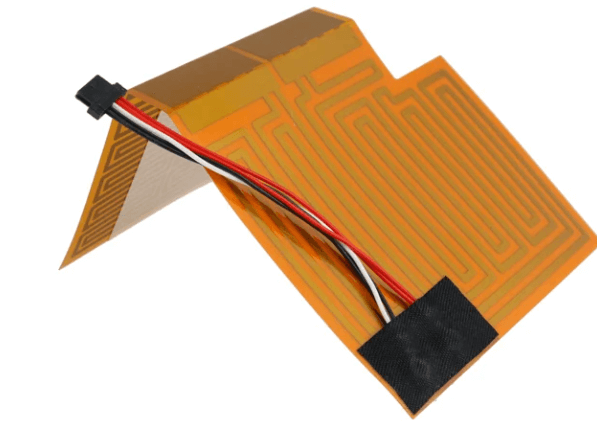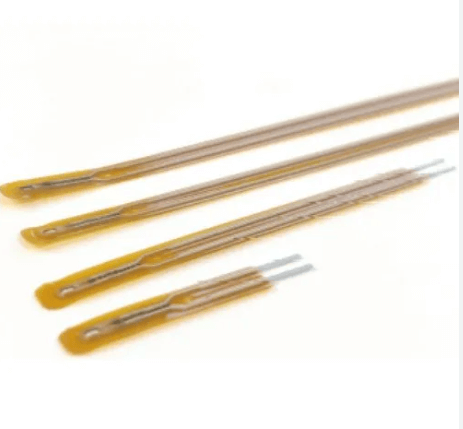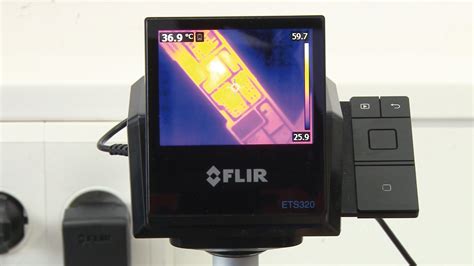Flex pcb thermistor
Advantages Of Using Flex PCB Thermistors In Modern Electronics
Flex PCB thermistors have become increasingly integral in the landscape of modern electronics, offering a multitude of advantages that enhance both the functionality and reliability of various devices. These components, which combine the flexibility of flexible printed circuit boards (PCBs) with the temperature-sensing capabilities of thermistors, are particularly valuable in applications where space constraints and dynamic environments are prevalent.
One of the primary advantages of flex PCB thermistors is their adaptability to complex geometries.
Unlike traditional rigid PCBs, flexible PCBs can be bent, folded, and twisted to fit into unconventional spaces. This flexibility is crucial in the design of compact and intricate electronic devices, such as wearable technology, medical implants, and advanced automotive systems. By conforming to the contours of these devices, flex PCB thermistors ensure optimal placement and performance, thereby enhancing the overall efficiency and effectiveness of the electronic system.
In addition to their physical adaptability, flex PCB thermistors offer superior thermal management capabilities.
The integration of thermistors into flexible PCBs allows for precise temperature monitoring and control, which is essential in preventing overheating and ensuring the longevity of electronic components. This is particularly important in high-performance applications, such as aerospace and industrial automation, where maintaining optimal operating temperatures is critical to system reliability and safety. The ability to accurately monitor and respond to temperature fluctuations helps in mitigating the risks associated with thermal stress and potential component failure.
Moreover, the use of flex PCB thermistors contributes to the miniaturization of electronic devices.
As consumer demand for smaller, more portable gadgets continues to grow, manufacturers are under increasing pressure to reduce the size of their products without compromising functionality. Flex PCB thermistors facilitate this trend by enabling the integration of multiple functions into a single, compact unit. This not only saves space but also reduces the overall weight of the device, making it more convenient for end-users.
Another significant advantage of flex PCB thermistors is their durability and reliability in dynamic environments.
Flexible PCBs are designed to withstand mechanical stress, such as bending and flexing, which is common in applications like robotics and flexible displays. The incorporation of thermistors into these resilient substrates ensures that temperature monitoring remains accurate and consistent, even under strenuous conditions. This robustness translates to longer device lifespans and reduced maintenance costs, as the likelihood of component failure due to mechanical fatigue is minimized.
Furthermore, the manufacturing process of flex PCB thermistors is conducive to high-volume production, making them cost-effective for large-scale applications.
Advances in fabrication techniques have streamlined the production of flexible PCBs, allowing for greater precision and consistency. This scalability is beneficial for industries that require mass production of reliable and high-performance electronic components, such as consumer electronics and telecommunications.
In conclusion, the advantages of using flex PCB thermistors in modern electronics are manifold. Their adaptability to complex geometries, superior thermal management capabilities, contribution to device miniaturization, durability in dynamic environments, and cost-effectiveness in high-volume production make them an invaluable asset in the development of advanced electronic systems. As technology continues to evolve, the role of flex PCB thermistors is likely to expand, driving further innovation and enhancing the performance of a wide array of electronic devices.

Design Considerations For Flex PCB Thermistor Integration
When integrating a flex PCB thermistor into a design, several critical considerations must be addressed to ensure optimal performance and reliability. The unique properties of flexible printed circuit boards (PCBs) offer distinct advantages, such as the ability to conform to complex shapes and endure dynamic flexing. However, these benefits come with specific design challenges that must be meticulously managed.
First and foremost, material selection is paramount.
Flex PCBs are typically constructed from polyimide or polyester substrates, which provide the necessary flexibility and thermal stability. The choice of substrate material can significantly impact the thermistor’s performance, particularly in terms of thermal conductivity and mechanical durability. Polyimide, for instance, is favored for its excellent thermal resistance and mechanical strength, making it suitable for high-temperature applications.
In addition to substrate material, the adhesive used in the flex PCB stack-up plays a crucial role.
The adhesive must maintain its integrity under thermal cycling and mechanical stress to prevent delamination, which could compromise the thermistor’s functionality. Therefore, selecting an adhesive with a compatible coefficient of thermal expansion (CTE) and robust mechanical properties is essential.
Another critical aspect is the layout design of the flex PCB. The placement of the thermistor should be strategically planned to ensure accurate temperature sensing.
It is advisable to position the thermistor away from heat-generating components to avoid erroneous readings. Moreover, the trace routing should be optimized to minimize thermal gradients and ensure uniform heat distribution across the thermistor. Utilizing wider traces can help reduce resistance and improve thermal conductivity, thereby enhancing the thermistor’s response time and accuracy.
Thermal management is another vital consideration.
Flex PCBs, by their nature, have lower thermal mass compared to rigid PCBs, which can lead to rapid temperature changes. To mitigate this, incorporating thermal vias or heat spreaders can help dissipate heat more effectively. Additionally, ensuring adequate ventilation and considering the use of thermal interface materials can further enhance thermal management.
Mechanical stress and strain are inherent challenges in flex PCB applications.
The thermistor and its associated traces must be designed to withstand bending, twisting, and other mechanical deformations without compromising performance. Employing strain relief techniques, such as curved traces and reinforced anchor points, can help distribute mechanical stress more evenly and prevent damage to the thermistor and its connections.
Furthermore, the electrical characteristics of the thermistor must be carefully considered.
The resistance-temperature relationship of the thermistor should be well understood to ensure accurate temperature measurements. Calibration may be necessary to account for any deviations caused by the flex PCB’s unique properties. Additionally, the thermistor’s power rating should be compatible with the application’s requirements to prevent self-heating and ensure reliable operation.
Environmental factors also play a significant role in the design process.
Flex PCBs are often used in harsh environments where they may be exposed to moisture, chemicals, and extreme temperatures. Therefore, protective coatings or encapsulation may be necessary to shield the thermistor and the flex PCB from environmental damage. Conformal coatings, for example, can provide a barrier against moisture and contaminants while maintaining flexibility.
In conclusion, the integration of a flex PCB thermistor requires a comprehensive approach that addresses material selection, layout design, thermal management, mechanical stress, electrical characteristics, and environmental protection. By carefully considering these factors, designers can leverage the advantages of flex PCBs to create reliable and accurate temperature sensing solutions for a wide range of applications.

Applications Of Flex PCB Thermistors In Medical Devices
Flex PCB thermistors have become increasingly significant in the realm of medical devices, offering a range of applications that enhance both functionality and reliability. These components, known for their flexibility and precision, are integral in various medical technologies, providing accurate temperature measurements and control, which are crucial for patient safety and device performance.
One of the primary applications of flex PCB thermistors in medical devices is in patient monitoring systems.
These systems require precise temperature readings to monitor patients’ vital signs accurately. Flex PCB thermistors are embedded in wearable devices, such as patches or wristbands, that continuously measure body temperature. Their flexibility allows them to conform to the contours of the human body, ensuring consistent contact and accurate readings. This capability is particularly beneficial in neonatal care, where maintaining a stable temperature is critical for the health of premature infants.
In addition to patient monitoring, flex PCB thermistors are also utilized in diagnostic equipment.
For instance, in imaging devices like MRI and CT scanners, maintaining a stable temperature is essential to ensure the accuracy of the images produced. Flex PCB thermistors are used to monitor and regulate the temperature within these machines, preventing overheating and ensuring optimal performance. Their ability to provide real-time temperature data helps in maintaining the integrity of the diagnostic process, thereby aiding in accurate diagnosis and treatment planning.
Furthermore, flex PCB thermistors play a vital role in therapeutic devices.
In devices such as dialysis machines and infusion pumps, precise temperature control is necessary to ensure the safety and efficacy of the treatment. Flex PCB thermistors are employed to monitor the temperature of fluids being administered to patients, ensuring they are within safe limits. This application is particularly important in treatments that require precise thermal regulation to avoid complications and enhance patient outcomes.
Another significant application of flex PCB thermistors is in surgical instruments.
During surgical procedures, maintaining the correct temperature of instruments is crucial to prevent tissue damage and ensure patient safety. Flex PCB thermistors are integrated into surgical tools to monitor and control their temperature, providing surgeons with real-time data to make informed decisions. This integration enhances the precision and safety of surgical procedures, contributing to better patient care.
Moreover, the use of flex PCB thermistors extends to implantable medical devices.
Devices such as pacemakers and neurostimulators require continuous temperature monitoring to ensure their proper functioning and longevity. Flex PCB thermistors, with their compact size and flexibility, are ideal for integration into these devices. They provide accurate temperature data, which is essential for the device’s performance and the patient’s safety. This application underscores the importance of reliable temperature monitoring in critical medical devices.
In conclusion, the applications of flex PCB thermistors in medical devices are vast and varied, encompassing patient monitoring systems, diagnostic equipment, therapeutic devices, surgical instruments, and implantable devices. Their ability to provide precise and reliable temperature measurements is indispensable in ensuring the safety, efficacy, and performance of medical technologies. As the medical field continues to advance, the role of flex PCB thermistors is likely to expand, further enhancing the capabilities of medical devices and improving patient care.

Enhancing Performance With Flex PCB Thermistor Technology
Flex PCB thermistor technology represents a significant advancement in the field of electronics, offering enhanced performance and reliability in various applications. This innovative technology combines the flexibility of flexible printed circuit boards (PCBs) with the precise temperature-sensing capabilities of thermistors, resulting in a versatile and efficient solution for modern electronic devices. As electronic devices continue to shrink in size while increasing in functionality, the demand for compact and reliable components has never been greater. Flex PCB thermistors address this need by providing a flexible, lightweight, and durable option for temperature monitoring and control.
One of the primary advantages of flex PCB thermistors is their ability to conform to complex shapes and fit into tight spaces.
Traditional rigid PCBs can be limiting in design, especially in applications where space is at a premium. Flex PCBs, on the other hand, can be bent, folded, and twisted without compromising their functionality. This flexibility allows for more innovative and compact designs, making them ideal for use in wearable technology, medical devices, and other applications where space constraints are a concern. Furthermore, the integration of thermistors into flex PCBs ensures accurate and reliable temperature measurements, which are crucial for the optimal performance and safety of electronic devices.
In addition to their flexibility, flex PCB thermistors offer improved thermal management capabilities.
Effective thermal management is essential for preventing overheating and ensuring the longevity of electronic components. Flex PCB thermistors can be strategically placed in areas prone to heat buildup, providing real-time temperature monitoring and enabling timely intervention to prevent damage. This proactive approach to thermal management not only enhances the performance of electronic devices but also extends their lifespan, reducing the need for frequent repairs or replacements.
Moreover, the use of flex PCB thermistors can lead to cost savings in the manufacturing process.
The ability to integrate multiple functions into a single flexible circuit reduces the need for additional components and interconnections, simplifying the overall design and assembly process. This reduction in complexity can result in lower production costs and shorter lead times, making flex PCB thermistors an attractive option for manufacturers looking to optimize their production processes.
Another notable benefit of flex PCB thermistors is their reliability in harsh environments.
Electronic devices are often exposed to challenging conditions, such as extreme temperatures, humidity, and mechanical stress. Flex PCBs are designed to withstand these conditions, maintaining their performance and integrity even in demanding environments. The incorporation of thermistors into these robust circuits ensures accurate temperature monitoring, providing an added layer of protection for sensitive electronic components.
Furthermore, the versatility of flex PCB thermistors extends to a wide range of applications.
In the automotive industry, for example, they can be used to monitor the temperature of critical components, such as batteries and engines, ensuring optimal performance and safety. In the medical field, flex PCB thermistors can be integrated into wearable devices to monitor body temperature, providing valuable data for patient care. Additionally, they are used in consumer electronics, aerospace, and industrial applications, demonstrating their broad applicability and importance in various sectors.
In conclusion, flex PCB thermistor technology offers numerous advantages, including flexibility, improved thermal management, cost savings, reliability in harsh environments, and versatility in application. As electronic devices continue to evolve, the demand for innovative and efficient components like flex PCB thermistors will only increase. By enhancing performance and reliability, this technology is poised to play a crucial role in the future of electronics, meeting the growing needs of various industries and paving the way for new and exciting advancements.






